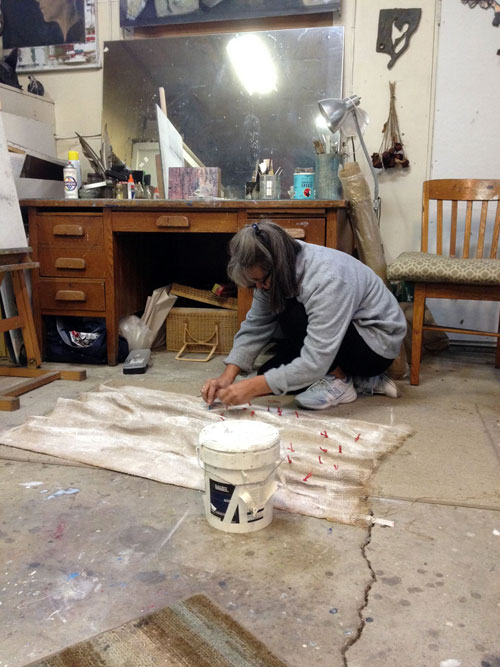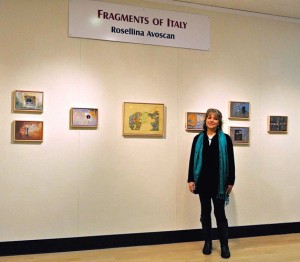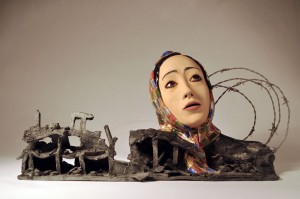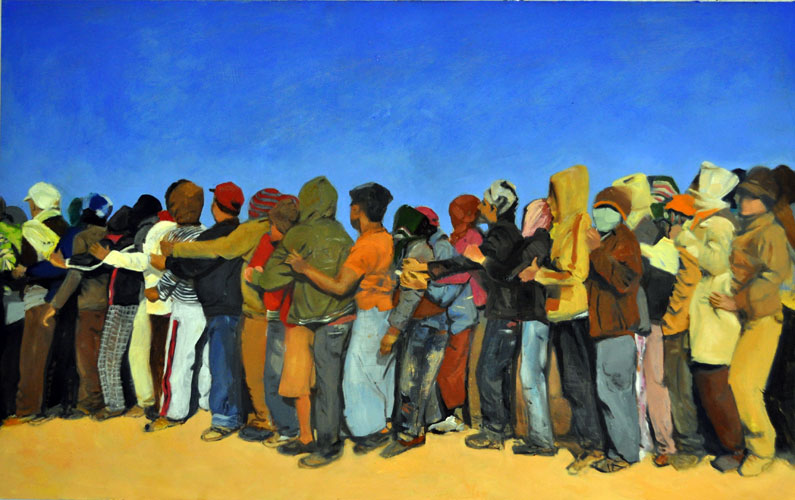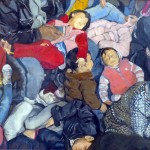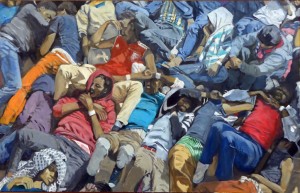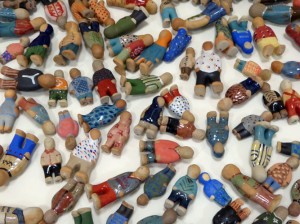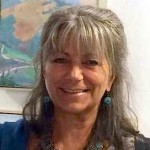Art, // January 22, 2018
Rosellina Avoscan — ARTIST
Interview with artist Rosellina Avoscan —
1. Who are you and what do you do?
I am Rosellina (Rosy) Avoscan. I am an Italian artist residing in the USA. I lived 27 years in London, UK where I worked, became a mother and later received a degree from Chelsea Art College. For the last ten years Ohio has been my home in the USA. I am married to painter and professor Frank Hobbs. We are very fortunate to be able to spend our summers making art in Cortona, Italy.
2. Why art?
I make art because that is what makes me feel deeply alive and allows me to experience a wide range of emotions. With each piece I have moments of zen-like peace and feel a sense of oneness with the work; at other times absolute despair and sense of failure. In between are many variations of these two poles. For me art is an personal language that helps me to express sensitivities that I would find difficult to put into words.
3. What is your earliest memory of wanting to be an artist?
As a young child growing up in Italy I was placed in a Catholic orphanage for a few years. One of the tasks I enjoyed most in school was to illustrate Biblical stories, and because I was quite good at it I soon became the one who secretly drew for most of my classmates. Once, when I was about 8 or 9 years old, after the Christmas break I found hidden inside my desk a full set of 24 Caran d’Ache colored pencils. I had the suspicion that it was the teacher who put it there, even if she didn’t say so. For me that was the best moment of my time there and felt encouraged to keep on drawing.
4. What are your favorite subject(s) and media?
I have always been drawn by small ordinary happenings – details that can be easily overlooked in favor of the big picture. The shift of focus allows me to see and frame situations, objects and shapes that, taken away from their ordinary context, can be appreciated for their own form, composition, color, and texture, and become somehow individual and mysterious.
My latest work is more about social issues, in particular the plight of the refugees fleeing from war-torn countries to find a new life and hopes by crossing the Mediterranean Sea to the coast of Italy. My goal has been to communicate, educate and change perceptions through the compelling beauty of form, color, shape, and design. Technique and abstract structure is the vehicle. For me representational art finds its power through compassion and empathy, and through a sense of our shared humanity. I am attracted to all kinds of media and have experimented with many different ones over the years. At the moment painting in oil and working with ceramics are the ones I favor most.
5. How do you work and approach your subject?
Throughout the years I have become more diligent and less of a procrastinator. Being focused on a project is of great help as it will get me into the studio every day. In regards to painting, once I’ve decided on the subject I’m aware that it may start easily and that the first session will feel very gratifying. But I also know that between this stage and the final work there are bound to be ten or even twenty paintings on that panel or canvas that will make me feel like a complete failure. With that in mind I can take on whatever the day will bring. Ceramics is another ballgame entirely. Anything can go wrong at any stage and most of the time it cannot be mended or painted over. It is a great lesson in non-attachment. You can work for months on something and in one single moment all of that work is gone.
In the last three years I have been working on a mixed-media installation called “In Honorem.” It is my personal way of honoring the lives of the many refugee children who have drowned in the Mediterranean Sea. The piece is made of an old fishing net and 455 hand-built, hollowed out and glazed figurines that represent those children. It is a work in progress. My goal is to reach 600 figures, which is the total number of children who died just in 2016. Each individual figure, and the several hours that I spend molding and shaping it in my hands, is for me a small prayer for each of these nameless and faceless little ones.
6. What are your favorite art works, artists?
There are so many! For a start I have to mention Frank Hobbs and Kristina Bogdanov who have been great inspirations, teachers, and support system. Of the old masters, my favorite is Caravaggio with his dramatic chiaroscuro and his humanity. Modern artists Giorgio Morandi and Louise Bourgeois have had a strong impact. Of contemporary artists I would mention George Nick, Lois Dodd, Catherine Kehoe, and Alex Kanevsky, just to name a few. I know many artists personally and from each of them I have learned something.
7. What are the best responses you have had to your work?
I have to say that with my last exhibition, “Am I Us or Them,” at the Werner Gallery of Ohio Wesleyan University, the best responses were, first, the curiosity of visitors and their willingness to learn more about the subject; and second, the fact that quite a few were visibly touched by it.
8. What do you like about your work?
I enjoy the solitude and concentration in the making, and people’s involvement and reaction when it is on show.
9. What advice would you give to other artists?
Get into the studio and let go of the fear of failure. Give in to the emotions (good or bad) and just work.
10. Where do you see yourself in 5-10 years?
Still working away, hopefully preparing for more exhibitions.
Facebook: https://www.facebook.com/rosy.avoscan?lst=1224910095%3A1302060318%3A1516659833
Email: rosy_avoscan@hotmail.it



